Sado Marine Biological Station was established in 1954 as an independent unit of the Faculty of Science of Niigata University. It is the oldest marine biological station on the Sea of Japan coast. The station is located on the northwestern coast of Sado Island, Japan and 65 km from the main university campus. In 1985, the building was reconstructed using reinforced concrete. In 2019, the station has incorporated to Sado Island Center for Ecological Sustainability together with the other 2 field stations of Niigata University.
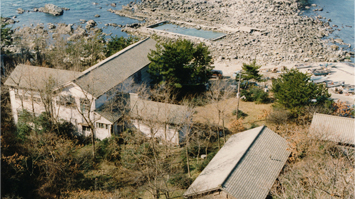
SMBS in 1979
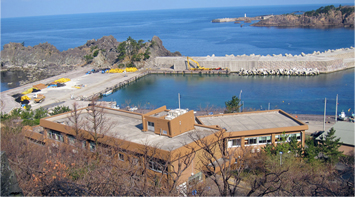
SMBS in 2013
The environments around the station are well conserved and offer a rich variety of fauna and flora. The warm Tsushima Current brings rich fisheries resources from the East China Sea into the Sea of Japan. Because of the current, fishes inhabit the temperate zone, such as yellow tails and tuna, are generally caught on the shore of Sado Island. However, the dry monsoon in winter lowers the sea temperature and the northern hemisphere fish including salmon, cod and sandfish also appear in winter and spring on the shore of the island.
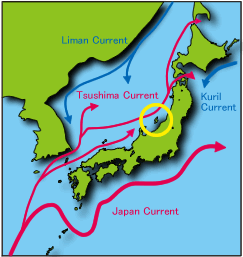
The sea currents around Japan (red arrows: warm currents; blue arrows: cold currents)
The station has the main building, a garage and a boathouse. The main building consists of a research building of two stories with a dormitory as a wing. The research building includes 2 practical training rooms (supplied with running seawater), 2 aquariums, 3 research laboratories, a cold room, a lecture room, a library, a student study room, a reception room, stock rooms, and staff offices. The dormitory, consisting of 10 western style rooms (including 2 guset rooms), 1 Japanese style room, a dining room and 2 shower rooms (8 shower booths), can accommodate 47 visiters. The station also has 3 cars and 2 research boats for sampling.
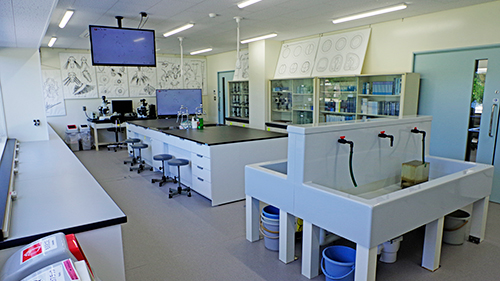
Practical training room
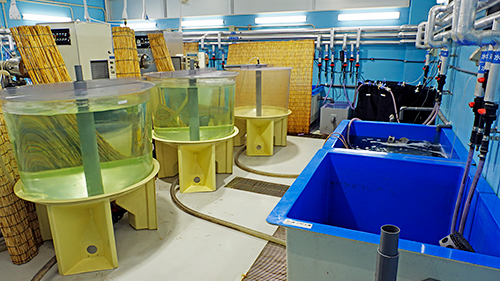
Fish tanks
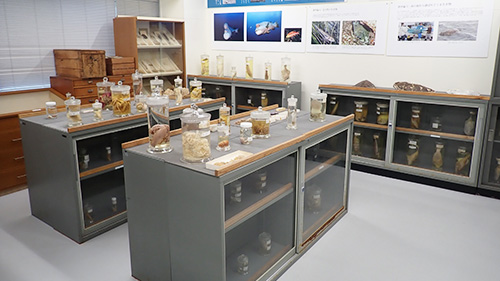
Collections of marine life (4,000 specimens preserved in formalin including 2,125 species of 16 animal phyla; go to database page).
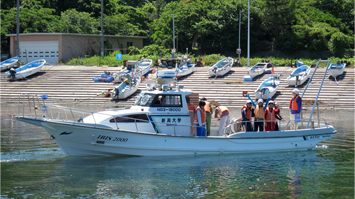
IBIS 2000 (3.8 t, capacity: 13 persons, GPS, sonar, fishfinder)
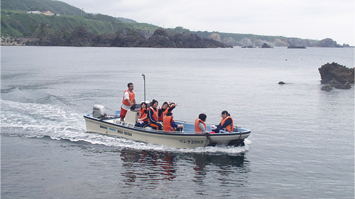
Velella 2003 (capacity: 8 persons, GPS, fishfinder)
Marine Biological Station, Sado Island Center for Ecological Sustainability is ideally situated for marine biological teaching and research within easy reach of a variety of marine habitats, such as rocky and sandy shores. The station offers courses on marine biology for undergraduate and graduate students of Niigata University and other universities. Most courses use animals that students captured themselves in the sea using a snorkeling equipment, plankton nets or hand nets.
In Sado Island, there are 3 field stations (University Forest, Research Station for Toki and Ecological Restoration, and Marine Biological Station) of Sado Island Center for Ecological Sustainability, Niigata University and we are promoting biological research and education in cooperation with the two stations. We are also promoting a joint usage for education and research of marine biology with other universities.
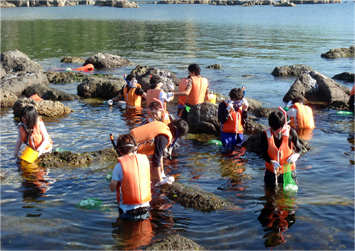
Animal collection using snorkeling equipment
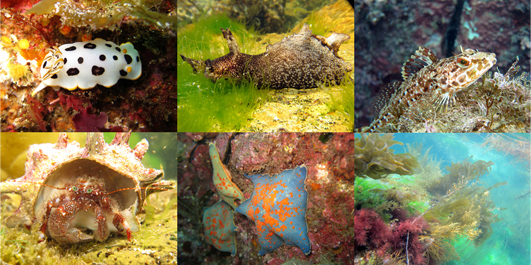
Marine life in Sado Island
The staff members at the station mainly focus on 1) neuroendocrine regulation of behavioral and physiological functions in diadromous migratory fish, such as salmonids and puffer fish; 2) ecology of diadromous migratory fish; and 3) phylogenetic relationships and evolution of the body structures of echinoderms.
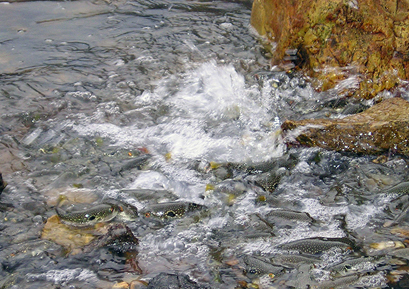
Spawning of grass puffer, Takifugu alboplumbeus
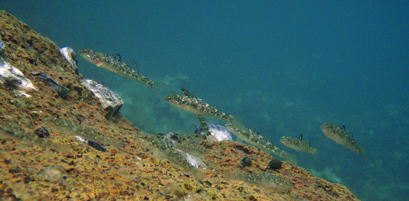
Goby fish migrating into a river from the ocean
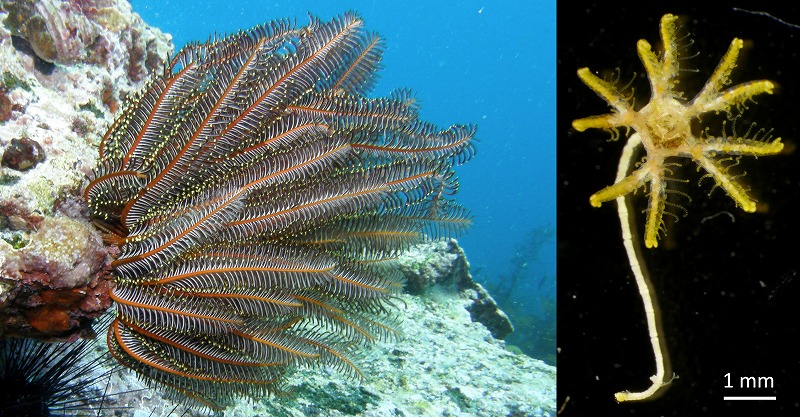
Feather star and its settled larva